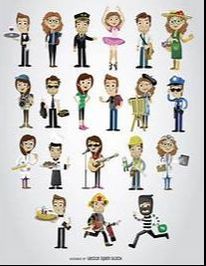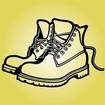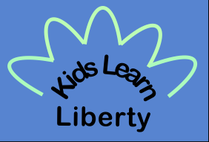Concepts for Kids1. Wealth is created when people work.
Words for Kids to Know specialization - when people have special jobs to do 
2. When people do special jobs, they learn to do their jobs very well. They will probably have tools and machines that make their work easier and faster. 3. Specialized workers produce more of what other people want to buy and in less time. This makes those things cost less so more buyers can afford them. 4. The freer people are to choose their special jobs, where and how much to work, and what they will take for payment, the more work that gets done. 5. As people create wealth and earn money for their work, they can buy more of what makes their lives better. 6. More wealth and lower prices are important parts of increasing prosperity. Info for Grown Ups When reading stories about work, make sure your child recognizes how the characters specialize, and create wealth, and how that benefits others. Online ResourcesFamily ActivityRelated Topics |
Literature Connection
Night Markets: Bringing Food to a City
by Joshua Horwitz This book clearly answers a question: how do the millions of residents of New York City eat when the city has almost no agriculture? It then describes the wholesalers that supply food for NYC, where it all comes from, and how it gets there. Though dated, out of print, and perhaps too graphic for some children (text and photos detail how a slaughtered calf is turned into veal cutlets), this is still a great book for helping children grasp the vastness of world trade. Read an online photocopy of the book. How Did That Get in My Lunchbox? The Story of Food by Lucia Gaggiotti While celebrating the tastes, colors, and textures of seven common lunchbox foods, this story explains where and how the foods are grown, processed, and transported. The illustrations are very upbeat and hint at the nationalities of the workers involved. The story ends with a short discussion of the five food groups and how different foods promote health. Though no mention is made of free trade, the book makes clear the large number of workers involved in food production without a bureaucrat in sight. Oxcart Man by Donald Hall An early American farm family grows crops and livestock and makes useful products to support itself and earn money. This story provides a basis for discussing how people specialize in their work and trade for what they do not make themselves. Boom Town by Sonia Levitin Amanda's family moves to California so her father can prospect for gold. While he works, the rest of the family makes a home and struggles to live in their small community. Amanda's life changes when she figures out how to bake pie and Pa finds selling slices of pie pays more than panning for gold. As the town grows, helped along by Amanda's business saavy, life becomes more rewarding in every way. Whose Shoes? A Shoe for Every Job by Stephen R. Swinburne This short board book explores the types of footwear worn by people of different ages and in different weather conditions. Then readers are shown photographs of nine different types of footwear and challenged to figure out the occupations of the people wearing them. This is a great accompaniment to a discussion of specialization. The Little Red Hen by Paul Galdone The illustration and a little more description of the characters and their lives together gives this version of The Little Red Hen some extra charm. The Little Red Hen Illustrated by Barry Downard The photographs with special effects for illustrations give the story whimsical humor. The Little Red Hen (My Turn, Your Turn) by Timothy S. Donehoo This version of The Little Red Hen can be read together by both a fluent reader and a very early reader. The Tuttle Twins and the Miraculous Pencil by Connor Boyack In this retelling of Leonard Read's famous I, Pencil story, the Tuttle twins go on a field trip to a pencil factory. With diagrams and illustrations, readers can grasp the huge cast of workers from all over the world who cooperate to produce this everyday object. Work Song by Gary Paulsen This is a not a typical book for Gary Paulsen. Its rhyming text and painted illustrations describe a surprising variety of jobs people do. The story helps children see the purposes of different types of work and recognizes the efforts workers make. Uncle Jed's Barbershop by Margaree King Mitchell Uncle Jedediah Johnson's dream was his own barbershop. He worked nearly all his life to realize it. That meant traveling the county by horseback giving haircuts and shaves. Along the way, Uncle Jed helped his less fortunate relatives, endured Jim Crow segregation, and lost thousands in the Great Depression. Along with lovely illustrations, this book tells his story. An Orange in January by Diana Hutts Aston Using charming illustrations, this is the story of an orange from pollination through consumption. In the process, the book demonstrates how workers in a variety of occupations make it possible for a child in a cold climate to eat a fresh orange in the middle of winter. The text is suitable for young children. |
Proudly powered by Weebly


